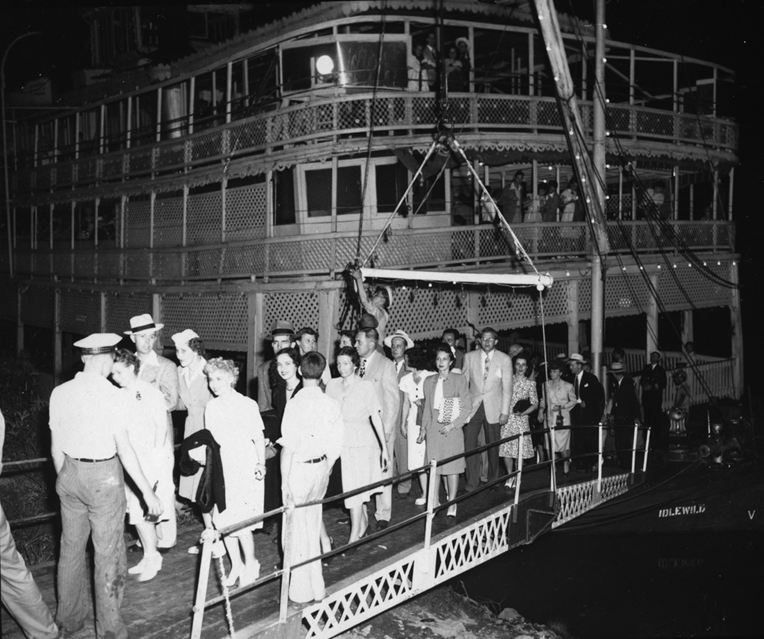More on the Grand Ole Opry on the Idlewild

Photo: Attendees disembarking from the Idlewild. Courtesy of Grand Ole Opry Archives
The Grand Ole Opry on the Belle of Louisville
In the summer of 1946, the Grand Ole Opry broadcast their show to over 130 NBC radio stations across the country from the Belle of Louisville – then known as the Idlewild – on a promotional press excursion. Performing on the ballroom deck were show regulars Minnie Pearl, emcee Red Foley, and country comedian The Duke of Paducah. Other performers included Pee Wee King and the Oak Ridge Quartet.
“In addition to the Opry program, radio listeners also heard sounds of the Idlewild’s sternwheel, roof bell, and calliope.” – The S&D Reflector.
While recordings of this particular broadcast are lost to time, the Country Music Hall of Fame features clips of similar shows performed that same year.
Minnie Pearl
Sarah Ophelia Colley created her comedic character “Minnie Pearl” in the 1930s, based on an older woman she met in Alabama. Minnie was known for her catchphrase, “I’m just so proud to be here”, and her straw hat with a dangling $1.49 price tag. Women comics were novel at the time, and her character’s quirks and style of speech endeared her to a growing fan base. In 1940, after a show in South Carolina, radio executives from Nashville invited her to perform on WSM’s Grand Ole Opry. When fans flooded the station with hundreds of letters, it was decided that she should become a recurring act on the show. She appeared on the Grand Ole Opry for over 50 years.
Country Music Hall of Fame – with clips!
Red Foley
Red was born in Blue Lick, Kentucky, and grew up in Berea with a guitar in his hand. In the 1930s, his career gained traction when he was featured on multiple radio shows, including NBC’s National Barn Dance. A multi-faceted musician, he supplied bass, guitar and vocals to John Lair’s Cumberland Ridge Runners. But he didn’t become famous until he signed with Decca in 1941. His big country hit was “Old Shep”, about his German Shepherd. In 1946, he was asked to replace Roy Acuff to headline the “Prince Albert Show” due to a salary dispute. According to the Country Music Hall of Fame, “the change personified the rise of smooth-voiced, solo country vocalists and the waning of the string band era.”
Duke of Paducah
Benjamin Francis Ford, nicknamed “Whitey”, began his performance career as a banjo player before discovering comedy. After being featured in a few Hollywood shorts with his folk band, he made his radio debut in Chicago in 1929. The 1930s solidified his career once we settled on his stage name, “The Duke of Paducah,” continuing to perform on multiple radio shows, including his own called the Renfro Valley Barn Dance (which also featured Grand Ole Opry emcee, Red Foley), and eventually landed on the Grand Ole Opry multiple times. His career spanned for decades, headlining with music stars like Gene Autry and Elvis.